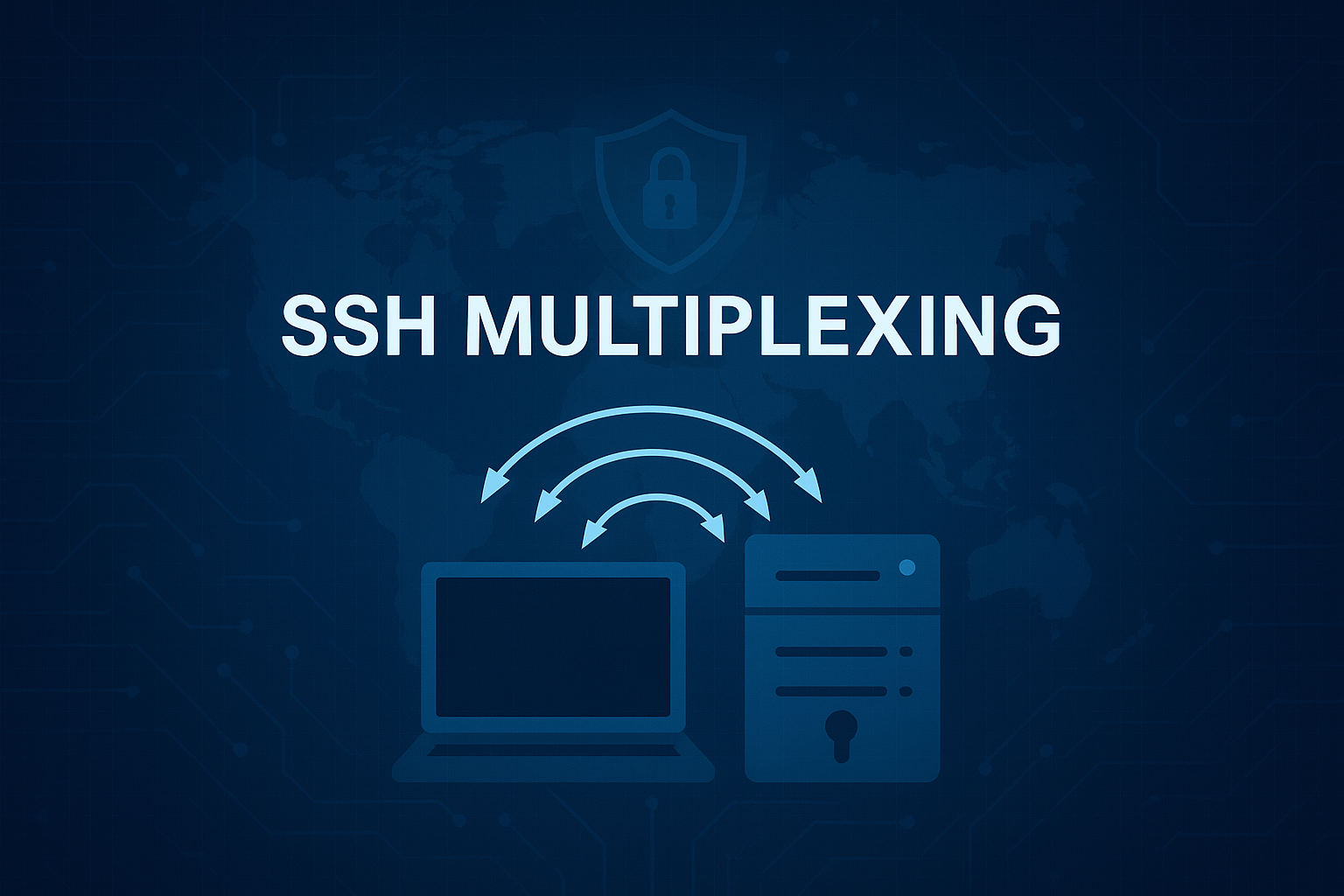Boost SSH Speed with SSH Multiplexing
Introduction to SSH Multiplexing
In previous discussions, we’ve focused on making remote server access via SSH more secure. This time, let’s shift our focus to performance and usability—specifically, how to make SSH connections faster and more efficient. Enter SSH Multiplexing, a feature that significantly improves connection times by reusing existing SSH sessions.
Table of Contents
- Introduction to SSH Multiplexing
- Setting Up SSH Multiplexing
- Why Use SSH Multiplexing
- Security Considerations
- Best Practices
- Conclusion
SSH Multiplexing allows you to perform a full authentication only once. Subsequent SSH connections to the same server within a defined time window can skip the full authentication step, leveraging the already-established connection. This reduces the overhead and latency of repeated logins—especially useful in environments where rapid or repeated SSH access is required.
Setting Up SSH Multiplexing
Setting up SSH Multiplexing is straightforward, particularly when configured through the ~/.ssh/config file. The three main directives used to enable multiplexing are:
**ControlMaster**: Defines whether the SSH session should serve as the master connection for subsequent multiplexed sessions.**ControlPath**: Specifies the path to the Unix domain socket used for shared connections.**ControlPersist**: Determines how long the master connection remains open after all sessions have exited.
Here’s a sample configuration:
1
2
3
4
5
6
7
8
Host opi5
HostName <ip-or-dns-name>
User <username>
Port 22
IdentityFile <path-to-private-key>
ControlMaster auto
ControlPath ~/.ssh/cm_socket/%r@%h:%p
ControlPersist 10m
With this configuration, the first SSH connection goes through full authentication. Any additional connections to the same host within the ControlPersist window connect instantly, bypassing authentication.
Why Use SSH Multiplexing
In one word: speed. When managing multiple SSH sessions—such as running commands across various servers or executing Ansible playbooks—the repeated authentication process can slow you down. SSH Multiplexing minimizes this delay by keeping a master session alive and reusing it.
For system administrators or DevOps engineers frequently jumping between servers, this efficiency can be a real productivity booster. However, it’s important to remember that this convenience comes with certain trade-offs in terms of SSH session security.
Security Considerations
The primary security concern with SSH Multiplexing is that once a master session is authenticated, any subsequent connections to that host within the persistence window can reuse the session without revalidating credentials. This opens up the possibility that other processes (or users, in shared environments) might piggyback on that session.
Additionally, the persistent session doesn’t last for a fixed time—it stays alive as long as the last SSH session to that host remains active. Once all sessions close, the timer defined by ControlPersist begins. A longer persistence window increases the time during which unauthorized access could theoretically occur.
To mitigate these risks:
- Set
ControlPersistto a short duration (e.g., 5–10 minutes). - Ensure your system is properly monitored.
- Consider additional access controls or session auditing if used in production or multi-user environments.
Best Practices
- Use dedicated SSH config blocks per host for clarity and control.
- Store
ControlPathin a secure, private location. - Regularly audit
.ssh/configto ensure unused multiplexing settings are cleaned up. - Combine with tools like Fail2Ban or multi-factor authentication (MFA) for added protection.
- Avoid using multiplexing on shared workstations or servers.
Conclusion
SSH Multiplexing is a powerful feature for anyone who frequently accesses remote servers, particularly when automation or repeated logins are involved. It offers significant performance benefits but must be implemented with a clear understanding of its security implications.
When configured responsibly, it can be a valuable tool in your system administration toolkit—helping balance the need for speed with appropriate security measures.
Need Linux expertise? I help businesses streamline servers, secure infrastructure, and automate workflows. Whether you’re troubleshooting, optimizing, or building from scratch—I’ve got you covered.
📬 Drop a comment or email me to collaborate. For more tutorials, tools, and insights, visit sebostechnology.com.
☕ Did you find this article helpful?
Consider supporting more content like this by buying me a coffee:
Your support helps me write more Linux tips, tutorials, and deep dives.

